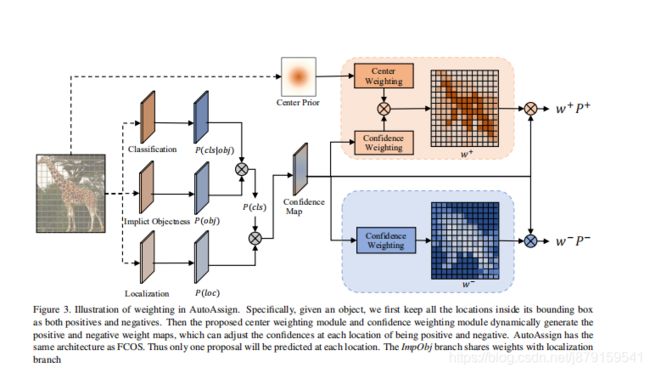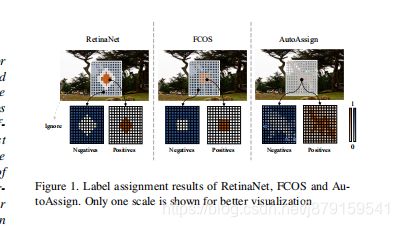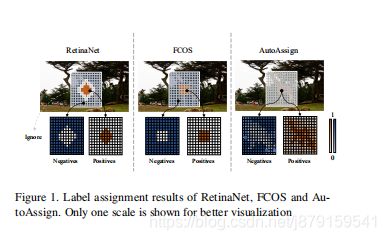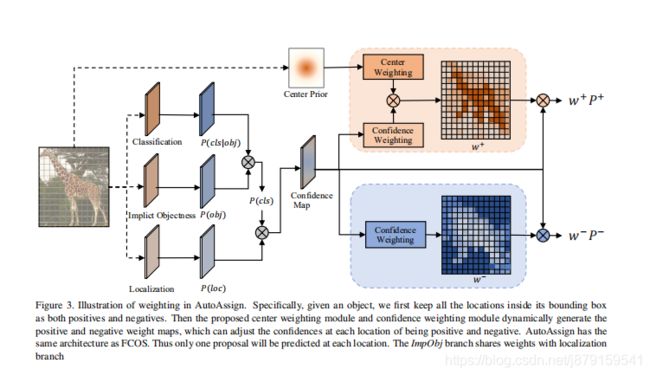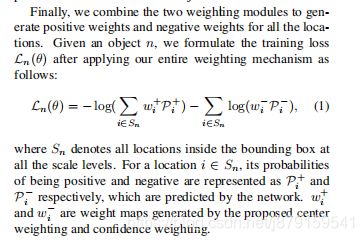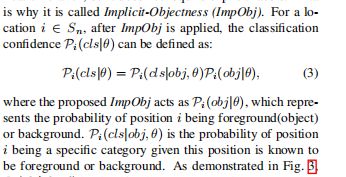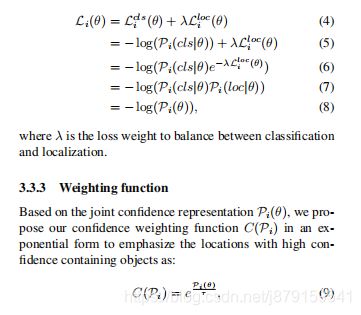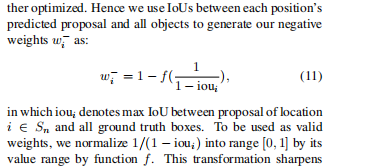- YOLOv10改进策略【Neck】| NeurIPS 2023 融合GOLD-YOLO颈部结构,强化小目标检测能力
Limiiiing
YOLOv10改进专栏YOLO深度学习计算机视觉目标检测
一、本文介绍本文主要利用GOLD-YOLO中的颈部结构优化YOLOv10的网络模型。GOLD-YOLO颈部结构中的GD机制借鉴了全局信息融合的理念,通过独特的模块设计,在不显著增加延迟的情况下,高效融合不同层级的特征信息。将其应用于YOLOv10的改进过程中,能够使模型更有效地整合多尺度特征,减少信息损失,强化对不同大小目标物体的特征表达,从而提升模型在复杂场景下对目标物体的检测精度与定位准确性。
- YOLOv10改进策略【Neck】| HS-FPN:高级筛选特征融合金字塔,加强细微特征的检测
Limiiiing
YOLOv10改进专栏YOLO深度学习计算机视觉目标检测
一、本文介绍本文将HS-FPN结构融入YOLOv10以优化目标检测网络模型。HS-FPN借助通道注意力机制及独特的多尺度融合策略,有效应对目标尺寸差异及特征稀缺问题。在YOLOv10中应用HS-FPN时,其利用高级特征筛选低级特征,增强特征表达,助力模型精准定位和识别目标,减少因尺度变化及特征不足导致的检测误差,显著提升YOLOv10在各项检测任务中的准确性与稳定性。专栏目录:YOLOv10改进目
- 基于 YOLOv8+PyQt5 的无人机红外目标检测系统:开启智能监测新时代
人工智能教学实践
人工智能YOLOqt无人机
基于YOLOv8+PyQt5的无人机红外目标检测系统:开启智能监测新时代【毕业与课程大作业参考】基于yolov8+pyqt5界面自适应的无人机红外目标检测系统demo.zip资源-CSDN文库在科技飞速发展的今天,无人机技术在各个领域的应用越来越广泛。为了提升无人机在复杂环境下的目标检测能力,结合先进的深度学习算法和图形用户界面开发技术,打造功能强大的无人机红外目标检测系统成为了研究热点。本文将详
- 【3D目标检测】YOLO3D 基于图像的3D目标检测算法
BILLY BILLY
YOLOv8系列3d目标检测YOLO
参考文档:https://ruhyadi.github.io/project/computer-vision/yolo3d/代码:https://github.com/ruhyadi/yolo3d-lightning本次分享将会从以下四个方面展开:物体检测模型中的算法选择单目摄像头下的物体检测神经网络训练预测参数的设计模型训练与距离测算1.物体检测模型中的算法选择物体检测(ObjectDetect
- python图像差分法目标检测_OpenCV实现帧差法检测运动目标
weixin_39708854
python图像差分法目标检测
今天的目标是用OpenCV实现对运动目标的检测,这里选用三帧帧差法。代码如下:#include#include#include#include#includedoubleThreshold_index=0;constintCONTOUR_MAX_AERA=200;voidtrackbar(intpos){Threshold_index=(double)pos;}intmain(intargc,ch
- 深度学习模型在汽车自动驾驶领域的应用
eso1983
深度学习汽车自动驾驶
汽车自动驾驶是一个高度复杂的系统,深度学习和计算技术在其中扮演核心角色。今天简单介绍一下自动驾驶领域常用的深度学习模型及其计算原理的解析。1.深度学习模型分类及应用场景1.1视觉感知模型CNN(卷积神经网络)应用:图像分类、物体检测(车辆、行人、交通标志)、语义分割(道路、车道线)。典型模型:YOLO:实时目标检测,低延迟特性适合自动驾驶。MaskR-CNN:结合检测与像素级分割,用于精确场景理解
- 【YOLO11改进 - Backbone主干】LSKNet:旋转目标检测新网络,通过DW卷积核和空间选择机制来动态调整目标的感受野
YOLO大师
目标检测网络人工智能yolov11YOLOpython计算机视觉
YOLOv11目标检测创新改进与实战案例专栏文章目录:YOLOv11创新改进系列及项目实战目录包含卷积,主干注意力,检测头等创新机制以及各种目标检测分割项目实战案例专栏链接:YOLOv11目标检测创新改进与实战案例文章目录YOLOv11目标检测创新改进与实战案例专栏介绍摘要创新点文章链接基本原理**LSKNet的结构**3.2大核卷积3.3空间核选择核心代码YOLO11引入代码tasks注册步骤1
- YOLOv10改进策略【卷积层】| ICCV-2023 LSK大核选择模块 包含二次独家创新
Limiiiing
YOLOv10改进专栏YOLO目标检测计算机视觉深度学习
一、本文介绍本文记录的是利用大核选择模块LSK优化YOLOv10的目标检测网络模型。在大尺寸图像中的小目标检测任务中,一直是个难题,无法仅基于外观实现较好的识别,因此需要广泛的上下文信息进行辅助。但不同物体所需的上下文信息范围不同,为了更好地对这些特性进行建模,本文利用大核选择模块二次创新C3k2,使模型能够产生具有各种大感受野的多个特征的同时,动态地根据输入调整模型的行为,使网络更好地适应图像中
- YOLOv10改进,YOLOv10检测头融合DynamicHead,添加小目标检测层(四头检测)+CA注意机制,全网首发
挂科边缘
YOLOv10改进YOLO目标检测人工智能深度学习计算机视觉
摘要作者提出一种新的检测头,称为“动态头”,旨在将尺度感知、空间感知和任务感知统一在一起。如果我们将骨干网络的输出(即检测头的输入)视为一个三维张量,其维度为级别×空间×通道,这样的统一检测头可以看作是一个注意力学习问题,直观的解决方案是对该张量进行全自注意力机制的构建。然而,直接在所有维度上学习注意力函数过于困难,且计算成本过高。因此,作者提出通过分别在特征的每个特定维度上部署注意力机制,即在级
- 基于深度学习的行人检测与识别系统:YOLOv5、YOLOv8、YOLOv10与UI界面的实现
2025年数学建模美赛
深度学习YOLOui人工智能分类
引言行人检测与识别技术作为计算机视觉领域的一个重要应用,广泛应用于智能监控、自动驾驶、公共安全等多个领域。行人检测系统的目标是通过图像或视频中的内容,自动识别并定位行人,这项任务在复杂环境中面临着不同的挑战,如多样的行人姿态、遮挡、光照变化等。近年来,深度学习的进步,尤其是目标检测领域的快速发展,为行人检测提供了强有力的支持。YOLO(YouOnlyLookOnce)系列模型,作为目前目标检测领域
- 毕业设计项目 深度学习人体目标检测
bee_dc
毕业设计毕设大数据
1简介今天学长向大家介绍一个机器视觉的毕设项目,基于深度学习的人体目标检测算法研究与实现项目运行效果:毕业设计深度学习行人目标检测系统项目分享:见文末!2目标检测概念普通的深度学习监督算法主要是用来做分类,如图1所示,分类的目标是要识别出图中所示是一只猫。在ILSVRC(ImageNetLargeScaleVisualRecognitionChallenge)竞赛以及实际的应用中,还包括目标定位和
- YOLOv10:面向下一代目标检测模型的创新探索
AgriTube
YOLO
随着计算机视觉技术的飞速发展,目标检测模型在各类应用场景中的重要性与日俱增。从自动驾驶到智能监控,目标检测的准确性和实时性都直接影响着应用的效果和用户体验。YOLO(YouOnlyLookOnce)系列作为实时目标检测的代表性模型,自发布以来便因其速度与精度的平衡性得到了广泛关注和应用。如今,随着YOLOv10的即将推出,我们站在技术的前沿,思考如何对这一模型进行革新,使其在面对复杂多变的场景时表
- YOLOv5:目标检测新星,解锁高性能实时识别
殷连靖Harlan
YOLOv5:目标检测新星,解锁高性能实时识别【下载地址】yolov5改进策略案例分析资源合集YOLOv5,作为目标检测领域的一颗明星,基于经典的YOLOv4算法进行了一系列创新性优化,显著提升了检测速度与精度。本资源集合深入解析YOLOv5的设计理念与技术细节,旨在帮助开发者和研究者更全面地理解并应用这些进步。从数据预处理到网络架构设计,再到后处理策略,我们逐一探讨其核心改进之处项目地址:htt
- YOLOv10改进策略【注意力机制篇】| EMA 即插即用模块,提高远距离建模依赖(含二次创新)
Limiiiing
YOLOv10改进专栏YOLO目标跟踪计算机视觉深度学习
一、本文介绍本文记录的是基于EMA模块的YOLOv10目标检测改进方法研究。EMA认为跨维度交互有助于通道或空间注意力预测,并且解决了现有注意力机制在提取深度视觉表示时可能带来的维度缩减问题。在改进YOLOv10的过程中能够为高级特征图产生更好的像素级注意力,能够建模长程依赖并嵌入精确的位置信息。专栏目录:YOLOv10改进目录一览|涉及卷积层、轻量化、注意力、损失函数、Backbone、SPPF
- 基于YOLOv11无人机视角船舶检测系统:项目概述与技术实现
qq1309399183
计算机视觉实战项目集合YOLO无人机人工智能计算机视觉无人机视角船舶检测yolo11改进yolo11涨点
文章目录YOLOv11无人机视角船舶检测系统:项目概述与技术实现项目背景项目简介核心目标YOLOv11的技术优势1.**更强的特征提取能力**2.**改进的多尺度检测**3.**轻量化设计**4.**实时处理能力**数据准备与模型训练1.**数据集构建**2.**模型训练**系统功能与使用方法1.**实时目标检测**2.**静态图片检测**3.**视频文件处理**4.**多种目标类别支持**安装与
- 利用去雾算法实现低光增强
mytzs123
图像增强算法opencv人工智能
[论文阅读](11)ACE算法和暗通道先验图像去雾算法(Rizzi|何恺明老师)_暗通道去雾算法-CSDN博客//https://zhuanlan.zhihu.com/p/500023711?utm_id=0#include#include#include#include#include#includeusingnamespacecv;usingnamespacestd;namespace{voi
- 目标检测入门教程:使用Python实现目标检测算法
晨曦之光,优美芝麻
目标检测python算法机器学习-深度学习
目标检测是计算机视觉领域中的重要任务,它旨在识别和定位图像或视频中的特定对象。本教程将介绍如何使用Python编程语言实现目标检测算法。我们将使用一种广泛应用的目标检测算法——基于深度学习的单阶段检测器YOLO(YouOnlyLookOnce)的最新版本YOLOv4作为示例。在开始之前,请确保您已经安装了Python和以下必要的库:NumPy、OpenCV和PyTorch。您可以使用pip命令来安
- COCO8 数据集上训练 YOLO11n:从入门到跑路(100 轮训练实战)
星际编程喵
Python探索之旅目标跟踪人工智能计算机视觉机器学习
前言训练YOLO11n,听起来就像是给赛博世界的“战斗天使”装上双核发动机,而COCO8数据集,则是那个小小的试验场。今天,我们就要在这个数据集上训练YOLO11n模型100轮,见证它如何从一个懵懂的“AI萌新”成长为“目标检测大佬”。本篇文章将以专业又幽默的方式,带你深入了解训练流程,并提供完整代码示例,让你轻松掌握这项技术。简介YOLO(YouOnlyLookOnce)是目标检测领域的明星模型
- VS2019+QT4.15+openCV4.5.1+CUDA加速
小小秀峰哥
python人工智能深度学习
文章目录前言一、软件安转以及注意事项二、CMake编译总结前言`最近公司有一个关于使用海康威视网络摄像头的目标检测的项目,发现使用openCV显示时,出现很大的延时,因此,只能使用cuda进行加速才能使显示达到实时,在进行编译时我发现很多问题,解决了好几天才完成编译一、软件安转以及注意事项1、Windows10系统2、VisualStudio2019与QT4.15(先安装)3、CUDA11.8、c
- 如何使用深度学习中的 Transformer 算法进行视频目标检测
go5463158465
python算法深度学习python开发语言
以下将介绍如何使用深度学习中的Transformer算法进行视频目标检测,并给出一个复现相关论文思路及示例代码。这里以DETR(End-to-EndObjectDetectionwithTransformers)为基础进行说明,它是将Transformer引入目标检测领域的经典论文。步骤概述环境准备:安装必要的库,如PyTorch、torchvision等。数据准备:使用公开的视频目标检测数据集,
- SpringBoot中运行Yolov5程序
eqa11
springbootYOLO后端
文章目录SpringBoot中运行Yolov5程序一、引言二、环境搭建1、SpringBoot项目创建2、YOLOv5环境配置三、SpringBoot与YOLOv5集成1、创建Python服务2、SpringBoot调用Python服务四、使用示例1、创建控制器五、总结SpringBoot中运行Yolov5程序一、引言在人工智能领域,目标检测是一个热门且实用的技术。YOLOv5作为目标检测算法中的
- YOLO 目标检测编程详解
不知名靓仔
YOLO目标检测人工智能
引言目标检测是计算机视觉中的一个重要任务,它旨在识别图像中的对象并定位这些对象的位置。YOLO(YouOnlyLookOnce)是一种流行的目标检测算法,因其速度快且准确度高而广受好评。本文将深入探讨YOLO的原理及其实现方法,并提供一个使用Python和PyTorch的示例代码。项目源码见最下方1.YOLO算法简介YOLO算法的核心思想是将目标检测视为回归问题,而不是传统的分类加定位的两阶段方法
- Python实现YOLO目标检测
我专门写bug
PYTHONpythonYOLO目标检测
#-*-coding:utf-8-*-#载入所需库importcv2importnumpyasnpimportosimporttimedefyolo_detect(pathIn='',pathOut=None,confidence_thre=0.5,nms_thre=0.3,jpg_quality=80):#pathIn:原始图片的路径#pathOut:结果图片的路径#label_path:类别标
- 【yolo目标检测】交通标志检测
鱼弦
【HOT】技术热谈YOLO目标检测人工智能
鱼弦:CSDN内容合伙人、CSDN新星导师、51CTO(Top红人+专家博主)、github开源爱好者(go-zero源码二次开发、游戏后端架构https://github.com/Peakchen)YOLO(YouOnlyLookOnce)是一种流行的实时目标检测算法,可用于交通标志检测。以下是关于YOLO目标检测的原理详细解释、使用场景解释以及相关文献材料的链接:原理详细解释:YOLO目标检测
- 【YOLOv11改进- 主干网络】YOLOv11+MobileNetV2(2018): 相比于 MobileNetV1 而言准确率更高,模型更小;
算法conv_er
YOLOv11目标检测改进YOLO网络cnn深度学习机器学习目标检测人工智能
YOLOV11目标检测-主干网络改进实例与创新改进专栏目录YOLOV11目标检测-主干网络改进实例与创新改进专栏本文介绍1.完整代码获取2.MobileNetv2介绍摘要亮点优势3.MobileNetv2网络结构图4.yolov11-MobileNetv2yaml文件5.MobileNetv2代码实现6.MobileNetv2添加方式论文地址:MobileNetV2:InvertedResidua
- 【YOLOv11改进- 主干网络】YOLOv11+TransNext特征提取网络(CVPR2024): 基于YOLOv11的主干网络改进超轻量;
算法conv_er
YOLOv11目标检测改进YOLO网络人工智能深度学习机器学习目标检测
YOLOV11目标检测-主干网络改进实例与创新改进专栏目录YOLOV11目标检测-主干网络改进实例与创新改进专栏本文介绍1.完整代码获取2.TransNext介绍摘要亮点优势3.TransNext网络结构图4.yolov11-transNextyaml文件5.TransNext代码实现6.TransNext添加方式论文地址:http://arxiv.org/pdf/2311.17132http:/
- 【YOLOv11改进- 注意力机制】YOLOv11+SCSA注意力机制(2024): 最新空间和通道协同注意力,助力YOLOv11有效涨点;包含二次创新
算法conv_er
YOLOv11目标检测改进YOLO深度学习人工智能目标检测计算机视觉机器学习
YOLOV11目标检测改进实例与创新改进专栏专栏地址:YOLOv11目标检测改进专栏,包括backbone、neck、loss、分配策略、组合改进、原创改进等;本文介绍本文给大家带来的改进内容是在YOLOv11中添加SCSA注意力机制,助力有效涨点。作者提出了一种新的空间与通道协同注意模块(SCSA),该模块涉及在多个语义层面上对空间注意力和通道注意力之间协同关系的研究。SCSA由两部分组成:可共
- 【计算机视觉】目标跟踪应用
油泼辣子多加
计算机视觉计算机视觉目标跟踪人工智能
一、简介目标跟踪是指根据目标物体在视频当前帧图像中的位置,估计其在下一帧图像中的位置。视频帧由t到t+1的检测,虽然也可以使用目标检测获取,但实际应用中往往是不可行的,原因如下:目标跟踪的目的是根据目标在当前视频帧图像中的位置,预测其在下一帧图像中的位置。然而,使用目标检测直接获取目标位置的方式在实际应用中存在一些限制,主要原因如下:1.实时性问题频繁检测开销大:目标检测通常需要对每一帧的整个图像
- 单目测距(yolo-目标检测+标定+深度学习目标检测_测距)
计算机C9硕士_算法工程师
YOLO目标检测深度学习
YOLOv5模型介绍YOLOv5是目前最先进的目标检测算法之一,在多个数据集上取得了优秀的表现。相较于YOLOv4,YOLOv5采用了更深的Backbone网络和更高的分辨率输入图像,以提高检测精度和速度。单目测距实现方法在目标检测的基础上,我们可以通过计算物体在图像中的像素大小来估计其距离。具体方法是,首先确定某个物体的实际尺寸,然后根据该物体在图像中的像素大小计算其距离。这个方法可以应用于各种
- SalFAU-Net:显著性目标检测的显著性融合注意U-Net
明初啥都能学会
目标检测人工智能计算机视觉
SalFAU-Net:显著性目标检测的显著性融合注意U-Net摘要IntroductionRelatedWorksSalFAU-Net:SaliencyFusionAttentionU-NetforSalientObjectDetection摘要显著目标检测(SOD)在计算机视觉中仍然是一个重要的任务,其应用范围从图像分割到自动驾驶。基于全卷积网络(FCN)的方法在过去几十年里在视觉显著性检测方面
- VMware Workstation 11 或者 VMware Player 7安装MAC OS X 10.10 Yosemite
iwindyforest
vmwaremac os10.10workstationplayer
最近尝试了下VMware下安装MacOS 系统,
安装过程中发现网上可供参考的文章都是VMware Workstation 10以下, MacOS X 10.9以下的文章,
只能提供大概的思路, 但是实际安装起来由于版本问题, 走了不少弯路, 所以我尝试写以下总结, 希望能给有兴趣安装OSX的人提供一点帮助。
写在前面的话:
其实安装好后发现, 由于我的th
- 关于《基于模型驱动的B/S在线开发平台》源代码开源的疑虑?
deathwknight
JavaScriptjava框架
本人从学习Java开发到现在已有10年整,从一个要自学 java买成javascript的小菜鸟,成长为只会java和javascript语言的老菜鸟(个人邮箱:
[email protected])
一路走来,跌跌撞撞。用自己的三年多业余时间,瞎搞一个小东西(基于模型驱动的B/S在线开发平台,非MVC框架、非代码生成)。希望与大家一起分享,同时有许些疑虑,希望有人可以交流下
平台
- 如何把maven项目转成web项目
Kai_Ge
mavenMyEclipse
创建Web工程,使用eclipse ee创建maven web工程 1.右键项目,选择Project Facets,点击Convert to faceted from 2.更改Dynamic Web Module的Version为2.5.(3.0为Java7的,Tomcat6不支持). 如果提示错误,可能需要在Java Compiler设置Compiler compl
- 主管???
Array_06
工作
转载:http://www.blogjava.net/fastzch/archive/2010/11/25/339054.html
很久以前跟同事参加的培训,同事整理得很详细,必须得转!
前段时间,公司有组织中高阶主管及其培养干部进行了为期三天的管理训练培训。三天的课程下来,虽然内容较多,因对老师三天来的课程内容深有感触,故借着整理学习心得的机会,将三天来的培训课程做了一个
- python内置函数大全
2002wmj
python
最近一直在看python的document,打算在基础方面重点看一下python的keyword、Build-in Function、Build-in Constants、Build-in Types、Build-in Exception这四个方面,其实在看的时候发现整个《The Python Standard Library》章节都是很不错的,其中描述了很多不错的主题。先把Build-in Fu
- JSP页面通过JQUERY合并行
357029540
JavaScriptjquery
在写程序的过程中我们难免会遇到在页面上合并单元行的情况,如图所示
如果对于会的同学可能很简单,但是对没有思路的同学来说还是比较麻烦的,提供一下用JQUERY实现的参考代码
function mergeCell(){
var trs = $("#table tr");
&nb
- Java基础
冰天百华
java基础
学习函数式编程
package base;
import java.text.DecimalFormat;
public class Main {
public static void main(String[] args) {
// Integer a = 4;
// Double aa = (double)a / 100000;
// Decimal
- unix时间戳相互转换
adminjun
转换unix时间戳
如何在不同编程语言中获取现在的Unix时间戳(Unix timestamp)? Java time JavaScript Math.round(new Date().getTime()/1000)
getTime()返回数值的单位是毫秒 Microsoft .NET / C# epoch = (DateTime.Now.ToUniversalTime().Ticks - 62135
- 作为一个合格程序员该做的事
aijuans
程序员
作为一个合格程序员每天该做的事 1、总结自己一天任务的完成情况 最好的方式是写工作日志,把自己今天完成了什么事情,遇见了什么问题都记录下来,日后翻看好处多多
2、考虑自己明天应该做的主要工作 把明天要做的事情列出来,并按照优先级排列,第二天应该把自己效率最高的时间分配给最重要的工作
3、考虑自己一天工作中失误的地方,并想出避免下一次再犯的方法 出错不要紧,最重
- 由html5视频播放引发的总结
ayaoxinchao
html5视频video
前言
项目中存在视频播放的功能,前期设计是以flash播放器播放视频的。但是现在由于需要兼容苹果的设备,必须采用html5的方式来播放视频。我就出于兴趣对html5播放视频做了简单的了解,不了解不知道,水真是很深。本文所记录的知识一些浅尝辄止的知识,说起来很惭愧。
视频结构
本该直接介绍html5的<video>的,但鉴于本人对视频
- 解决httpclient访问自签名https报javax.net.ssl.SSLHandshakeException: sun.security.validat
bewithme
httpclient
如果你构建了一个https协议的站点,而此站点的安全证书并不是合法的第三方证书颁发机构所签发,那么你用httpclient去访问此站点会报如下错误
javax.net.ssl.SSLHandshakeException: sun.security.validator.ValidatorException: PKIX path bu
- Jedis连接池的入门级使用
bijian1013
redisredis数据库jedis
Jedis连接池操作步骤如下:
a.获取Jedis实例需要从JedisPool中获取;
b.用完Jedis实例需要返还给JedisPool;
c.如果Jedis在使用过程中出错,则也需要还给JedisPool;
packag
- 变与不变
bingyingao
不变变亲情永恒
变与不变
周末骑车转到了五年前租住的小区,曾经最爱吃的西北面馆、江西水饺、手工拉面早已不在,
各种店铺都换了好几茬,这些是变的。
三年前还很流行的一款手机在今天看起来已经落后的不像样子。
三年前还运行的好好的一家公司,今天也已经不复存在。
一座座高楼拔地而起,
- 【Scala十】Scala核心四:集合框架之List
bit1129
scala
Spark的RDD作为一个分布式不可变的数据集合,它提供的转换操作,很多是借鉴于Scala的集合框架提供的一些函数,因此,有必要对Scala的集合进行详细的了解
1. 泛型集合都是协变的,对于List而言,如果B是A的子类,那么List[B]也是List[A]的子类,即可以把List[B]的实例赋值给List[A]变量
2. 给变量赋值(注意val关键字,a,b
- Nested Functions in C
bookjovi
cclosure
Nested Functions 又称closure,属于functional language中的概念,一直以为C中是不支持closure的,现在看来我错了,不过C标准中是不支持的,而GCC支持。
既然GCC支持了closure,那么 lexical scoping自然也支持了,同时在C中label也是可以在nested functions中自由跳转的
- Java-Collections Framework学习与总结-WeakHashMap
BrokenDreams
Collections
总结这个类之前,首先看一下Java引用的相关知识。Java的引用分为四种:强引用、软引用、弱引用和虚引用。
强引用:就是常见的代码中的引用,如Object o = new Object();存在强引用的对象不会被垃圾收集
- 读《研磨设计模式》-代码笔记-解释器模式-Interpret
bylijinnan
java设计模式
声明: 本文只为方便我个人查阅和理解,详细的分析以及源代码请移步 原作者的博客http://chjavach.iteye.com/
package design.pattern;
/*
* 解释器(Interpreter)模式的意图是可以按照自己定义的组合规则集合来组合可执行对象
*
* 代码示例实现XML里面1.读取单个元素的值 2.读取单个属性的值
* 多
- After Effects操作&快捷键
cherishLC
After Effects
1、快捷键官方文档
中文版:https://helpx.adobe.com/cn/after-effects/using/keyboard-shortcuts-reference.html
英文版:https://helpx.adobe.com/after-effects/using/keyboard-shortcuts-reference.html
2、常用快捷键
- Maven 常用命令
crabdave
maven
Maven 常用命令
mvn archetype:generate
mvn install
mvn clean
mvn clean complie
mvn clean test
mvn clean install
mvn clean package
mvn test
mvn package
mvn site
mvn dependency:res
- shell bad substitution
daizj
shell脚本
#!/bin/sh
/data/script/common/run_cmd.exp 192.168.13.168 "impala-shell -islave4 -q 'insert OVERWRITE table imeis.${tableName} select ${selectFields}, ds, fnv_hash(concat(cast(ds as string), im
- Java SE 第二讲(原生数据类型 Primitive Data Type)
dcj3sjt126com
java
Java SE 第二讲:
1. Windows: notepad, editplus, ultraedit, gvim
Linux: vi, vim, gedit
2. Java 中的数据类型分为两大类:
1)原生数据类型 (Primitive Data Type)
2)引用类型(对象类型) (R
- CGridView中实现批量删除
dcj3sjt126com
PHPyii
1,CGridView中的columns添加
array(
'selectableRows' => 2,
'footer' => '<button type="button" onclick="GetCheckbox();" style=&
- Java中泛型的各种使用
dyy_gusi
java泛型
Java中的泛型的使用:1.普通的泛型使用
在使用类的时候后面的<>中的类型就是我们确定的类型。
public class MyClass1<T> {//此处定义的泛型是T
private T var;
public T getVar() {
return var;
}
public void setVa
- Web开发技术十年发展历程
gcq511120594
Web浏览器数据挖掘
回顾web开发技术这十年发展历程:
Ajax
03年的时候我上六年级,那时候网吧刚在小县城的角落萌生。传奇,大话西游第一代网游一时风靡。我抱着试一试的心态给了网吧老板两块钱想申请个号玩玩,然后接下来的一个小时我一直在,注,册,账,号。
彼时网吧用的512k的带宽,注册的时候,填了一堆信息,提交,页面跳转,嘣,”您填写的信息有误,请重填”。然后跳转回注册页面,以此循环。我现在时常想,如果当时a
- openSession()与getCurrentSession()区别:
hetongfei
javaDAOHibernate
来自 http://blog.csdn.net/dy511/article/details/6166134
1.getCurrentSession创建的session会和绑定到当前线程,而openSession不会。
2. getCurrentSession创建的线程会在事务回滚或事物提交后自动关闭,而openSession必须手动关闭。
这里getCurrentSession本地事务(本地
- 第一章 安装Nginx+Lua开发环境
jinnianshilongnian
nginxluaopenresty
首先我们选择使用OpenResty,其是由Nginx核心加很多第三方模块组成,其最大的亮点是默认集成了Lua开发环境,使得Nginx可以作为一个Web Server使用。借助于Nginx的事件驱动模型和非阻塞IO,可以实现高性能的Web应用程序。而且OpenResty提供了大量组件如Mysql、Redis、Memcached等等,使在Nginx上开发Web应用更方便更简单。目前在京东如实时价格、秒
- HSQLDB In-Process方式访问内存数据库
liyonghui160com
HSQLDB一大特色就是能够在内存中建立数据库,当然它也能将这些内存数据库保存到文件中以便实现真正的持久化。
先睹为快!
下面是一个In-Process方式访问内存数据库的代码示例:
下面代码需要引入hsqldb.jar包 (hsqldb-2.2.8)
import java.s
- Java线程的5个使用技巧
pda158
java数据结构
Java线程有哪些不太为人所知的技巧与用法? 萝卜白菜各有所爱。像我就喜欢Java。学无止境,这也是我喜欢它的一个原因。日常
工作中你所用到的工具,通常都有些你从来没有了解过的东西,比方说某个方法或者是一些有趣的用法。比如说线程。没错,就是线程。或者确切说是Thread这个类。当我们在构建高可扩展性系统的时候,通常会面临各种各样的并发编程的问题,不过我们现在所要讲的可能会略有不同。
- 开发资源大整合:编程语言篇——JavaScript(1)
shoothao
JavaScript
概述:本系列的资源整合来自于github中各个领域的大牛,来收藏你感兴趣的东西吧。
程序包管理器
管理javascript库并提供对这些库的快速使用与打包的服务。
Bower - 用于web的程序包管理。
component - 用于客户端的程序包管理,构建更好的web应用程序。
spm - 全新的静态的文件包管
- 避免使用终结函数
vahoa.ma
javajvmC++
终结函数(finalizer)通常是不可预测的,常常也是很危险的,一般情况下不是必要的。使用终结函数会导致不稳定的行为、更差的性能,以及带来移植性问题。不要把终结函数当做C++中的析构函数(destructors)的对应物。
我自己总结了一下这一条的综合性结论是这样的:
1)在涉及使用资源,使用完毕后要释放资源的情形下,首先要用一个显示的方
